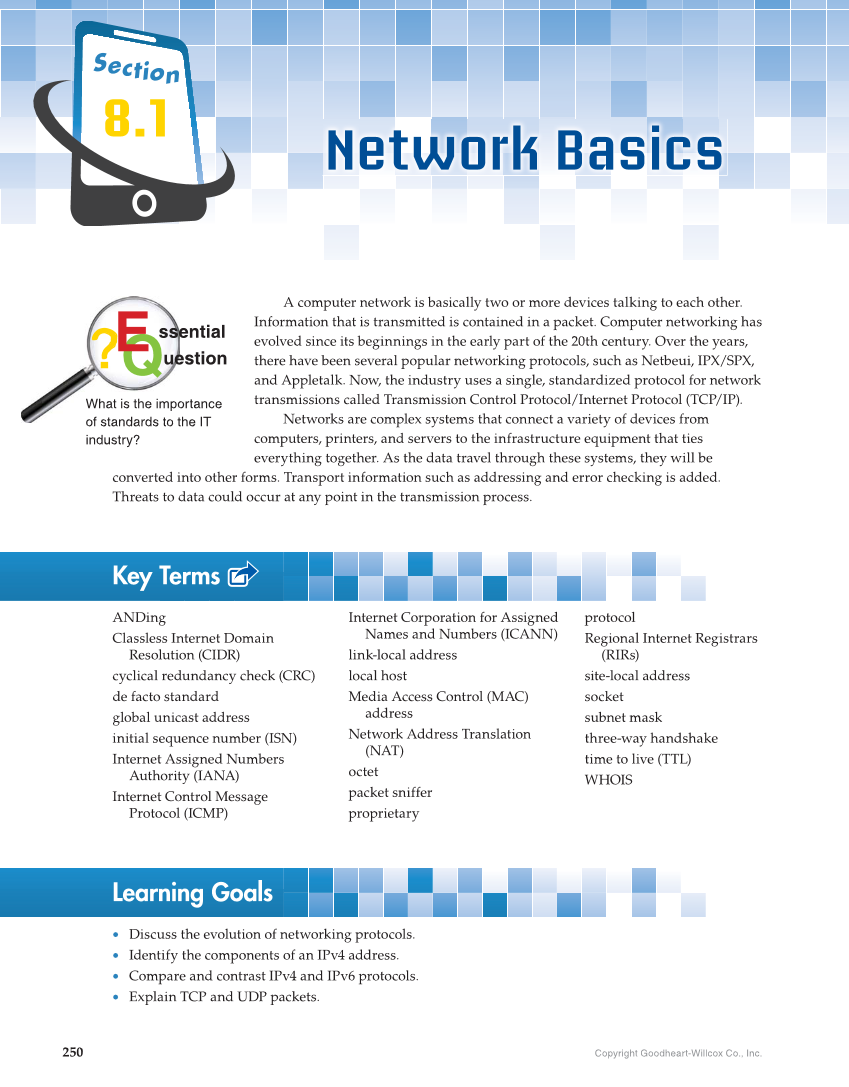250 Copyright Goodheart-Willcox Co., Inc. Section Network Basics A computer network is basically two or more devices talking to each other. Information that is transmitted is contained in a packet. Computer networking has evolved since its beginnings in the early part of the 20th century. Over the years, there have been several popular networking protocols, such as Netbeui, IPX/SPX, and Appletalk. Now, the industry uses a single, standardized protocol for network transmissions called Transmission Control Protocol/Internet Protocol (TCP/IP). Networks are complex systems that connect a variety of devices from computers, printers, and servers to the infrastructure equipment that ties everything together. As the data travel through these systems, they will be converted into other forms. Transport information such as addressing and error checking is added. Threats to data could occur at any point in the transmission process. Key Terms ANDing Classless Internet Domain Resolution (CIDR) cyclical redundancy check (CRC) de facto standard global unicast address initial sequence number (ISN) Internet Assigned Numbers Authority (IANA) Internet Control Message Protocol (ICMP) Internet Corporation for Assigned Names and Numbers (ICANN) link-local address local host Media Access Control (MAC) address Network Address Translation (NAT) octet packet sniffer proprietary protocol Regional Internet Registrars (RIRs) site-local address socket subnet mask three-way handshake time to live (TTL) WHOIS 8.1 What is the of standards to the IT industry? impoimportance standards t t Learning Goals • Discuss the evolution of networking protocols. • Identify the components of an IPv4 address. • Compare and contrast IPv4 and IPv6 protocols. • Explain TCP and UDP packets.
